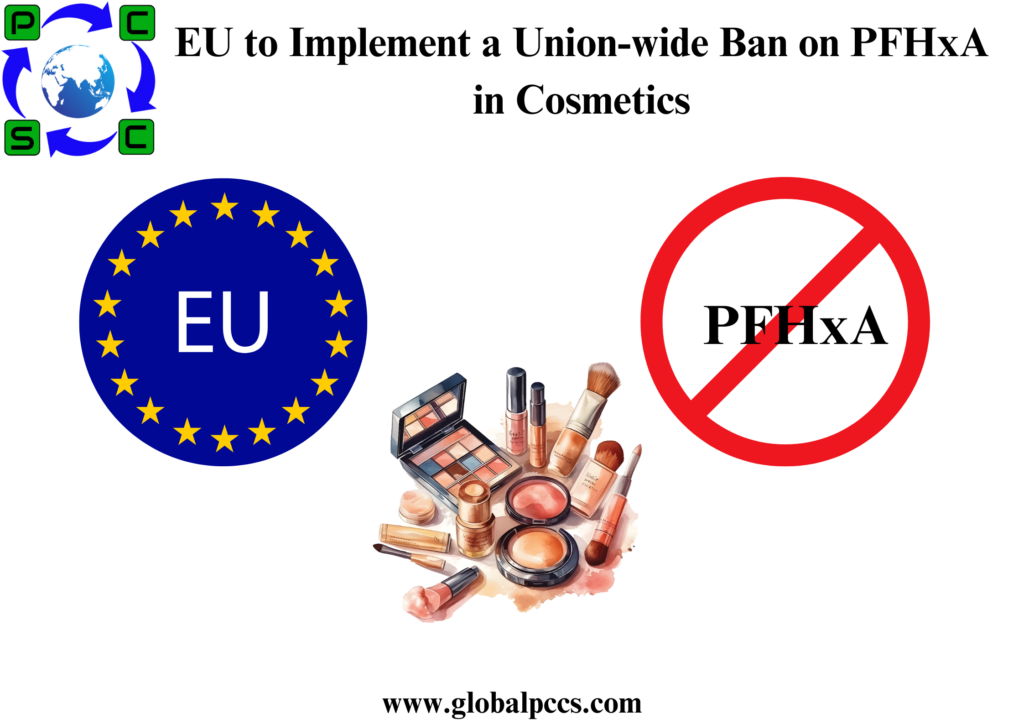 The use of PFHxA, its salts, and related compounds in cosmetics will be outlawed as of October 10, 2026.
The use of PFHxA, its salts, and related compounds in cosmetics will be outlawed as of October 10, 2026.
A draft rule to change Annex XVII of rule (EC) No 1907/2006 Concerning the Registration, Evaluation, Authorisation and Restriction of Chemicals (REACH) was notified to the World Trade Organisation (WTO) on June 19, 2023 by the European Union. The use of undecafluorohexanoic acid (PFHxA), its salts, and related compounds in cosmetics and other applications was suggested to be banned in this draft.1. The finalised regulation, Commission Regulation (EU) 2024/2462, was published in the Official Journal of the European Union on September 20, 2024. It is scheduled to take effect on October 10, 2024.
Reasons for Restricting the Use of PFHxA
A subclass of per- and polyfluoroalkyl compounds (PFAS) with a reputation for being persistent in the environment is called PFHxAs. They are widely employed in a variety of industries, including textiles, firefighting foams, and paper and cardboard for food contact materials. Perfluorooctanoic acid (PFOA) and perfluorocarboxylic acids (PFCAs), two restricted perfluorinated compounds, have been replaced by PFHxA, its salts, and related chemicals. These compounds are difficult to remove from water due to their high persistence and mobility, which have shown harmful qualities. Their continuous usage may cause a buildup in the environment, increasing human and environmental exposure.
Germany filed a dossier to the European Chemicals Agency (ECHA) in December 2019 with recommendations for limits on PFHxA, its salts, and related compounds in an effort to reduce PFHxA emissions. The Committee for Socio-Economic Analysis (SEAC) and the Committee for Risk Assessment (RAC) both provided comments on Germany’s plan in December 2021 and June 2021, respectively. The European Commission has drafted this rule based on the proposal from Germany and the opinions of the Committees.
Key Points in the Regulation
- Restricted and Excluded Substances
According to the regulation, the restriction applies to PFHxA, its salts and related substances that:
- have a linear or branched perfluorophenyl group with the formula C5F11- directly attached to another carbon atom as one of the structural elements; or
- have a linear or branched perfluorohexyl group with the formula C6F13-.
However, the following substances are excluded from the restriction:
- C6F14
- C6F13-C(=O)OH, C6F13-C(=O)O-X’ or C6F13-CF2-X′ (where X′ = any group, including salts)
- any substance having a perfluoroalkyl group C6F13- directly attached to an oxygen atom at one of the non-terminal carbon atoms.
- Prohibition for Cosmetics
After weighing the costs and advantages to society, the SEAC came to the conclusion that outlawing the use of PFHxA, its salts, and similar compounds in cosmetics was probably a suitable way to mitigate the dangers involved. Consequently, the law states that these compounds cannot be used in cosmetics in amounts that equal or exceed 25 parts per billion for the total amount of PFHxA and its salts, or 1,000 parts per billion for the total amount of PFHxA-related substances, measured in homogenous material.
The regulation gives cosmetic stakeholders until October 10, 2026, a 24-month transitional period, to ensure they have enough time to comply with the restriction. It also makes it clear that cosmetics released before this date will not be subject to the ban.








 Authorised IMDS & CDX Training & Consulting partner for
Authorised IMDS & CDX Training & Consulting partner for






